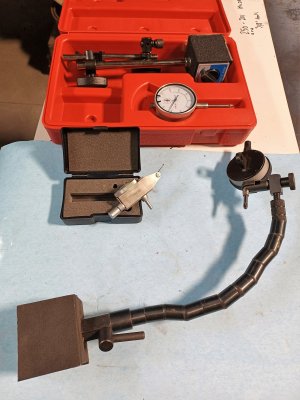ThirtyOneDriver
Johnathan (John)
Apologies for the multiple posts; I'm waiting on an assistant to arrive so I can work on things in the cold.
Tomorrow, I want to remount my vise to the milling machine - this week, I've learned that I don't necessarily need to mount the swivel base (which is cool). Last time I mounted it, I used an edge finder to ensure the fixed jaw was (relatively, it's only an edge finder) parallel w/ the y-axis - I'd like to do the same BUT I want to improve how I determined (squareness?) the accuracy - my goal this week is to get some milling practice by making a square block from material (chunk already cut off the end of the 1018 I've been eyeing up for the tool slide project).
I'm sure there's videos, but I have a hard time staying focused when on YouTube...
My idea right now is to place one of my long levels in the vise (I haven't decided if this is a good idea yet, the thought of clamping makes me slightly nervous) so that I have a "true" edge to measure off of and by running the table out to the ends of it's travel, it'll give me a (I think you guys refer to it as accuracy) broader baseline to measure from.
Is there a better way (well there is) - could someone recommend a better way to do this, or somewhere to read up on it? I don't really have any "material" that i would consider true outside of the level.
Tomorrow, I want to remount my vise to the milling machine - this week, I've learned that I don't necessarily need to mount the swivel base (which is cool). Last time I mounted it, I used an edge finder to ensure the fixed jaw was (relatively, it's only an edge finder) parallel w/ the y-axis - I'd like to do the same BUT I want to improve how I determined (squareness?) the accuracy - my goal this week is to get some milling practice by making a square block from material (chunk already cut off the end of the 1018 I've been eyeing up for the tool slide project).
I'm sure there's videos, but I have a hard time staying focused when on YouTube...
My idea right now is to place one of my long levels in the vise (I haven't decided if this is a good idea yet, the thought of clamping makes me slightly nervous) so that I have a "true" edge to measure off of and by running the table out to the ends of it's travel, it'll give me a (I think you guys refer to it as accuracy) broader baseline to measure from.
Is there a better way (well there is) - could someone recommend a better way to do this, or somewhere to read up on it? I don't really have any "material" that i would consider true outside of the level.






